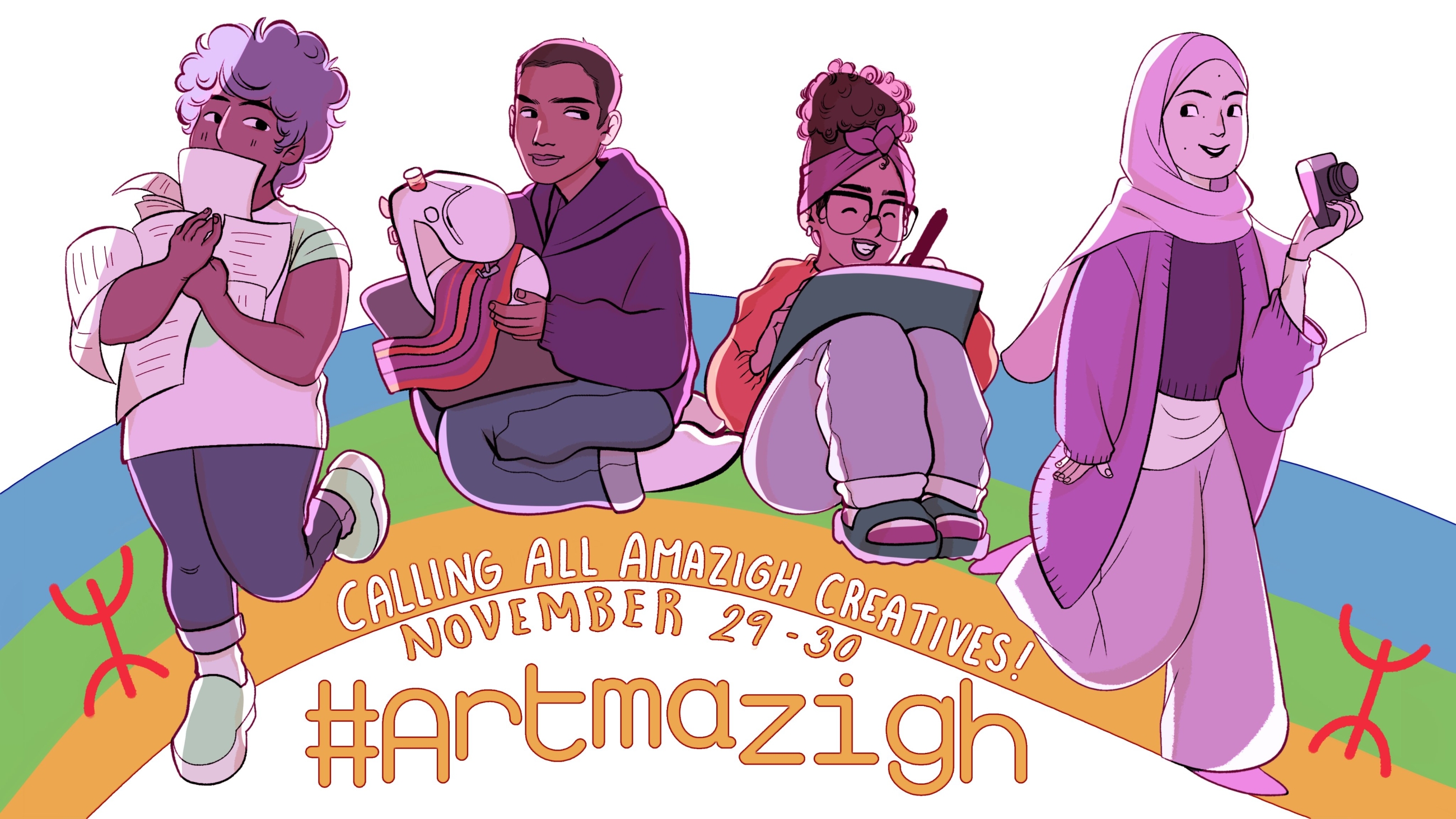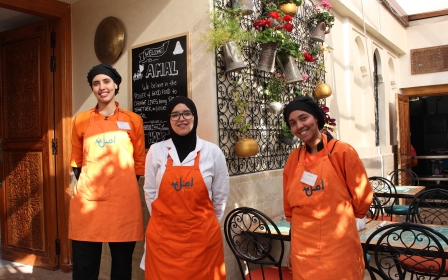#Artmazigh Day showcases cultural art through pride

#Artmazigh Day was celebrated this week by Amazigh artists on social media, posting images of their art work that proudly details all aspects of their culture.
The Amazigh, which means "free people” in the Tamazight language, are the people indigenous to North Africa, from Morocco through to Egypt. The term “Berber”, often used to refer to the Amazigh, is considered to be an offensive word due to its original meaning derived from the Greek word, barbaros, meaning barbarian.
"I was inspired by other hashtags on Twitter like #ArtMubarak for Muslim artists," Safiya Zerrougui, an illustrater and character designer based in Canada, who started #Artmazigh, told Middle East Eye. "I saw the way they created a great space for artists to showcase their talent and with the help of my Amazigh friends, I came up with the hashtag and dates."
Many Amazigh people have often felt they have been systemically marginalised historically in national narratives, politically and socio-economically, with the more separatist Amazigh calling for autonomy. Events like Artmazigh Day are seen as an opportunity to express pride in their culture through paintings and stories, and to explain their identity to a non-Amazigh audience.
"I think it's incredibly important to feel a sense of belonging and pride in your community," Zerrougui said. "I've had many creatives tell me that I was the first fellow Amazigh artist they'd met on social media. A hashtag event was an easy way to build that sense of community all while uplifting one another."
New MEE newsletter: Jerusalem Dispatch
Sign up to get the latest insights and analysis on Israel-Palestine, alongside Turkey Unpacked and other MEE newsletters
One social media user highlighted her story of a girl who travels to study spirits by explaining some of the traditional clothing of Amazigh women in Tunisia and Libya.
Another artist who shared her work on Amazigh women with tattoos, explained the significance behind the face art.
Social media users from North Africa, and from the North African diaspora, used the hashtag to introduce themselves and to become acquainted with one another's work.
One artist embroidered traditional Amazigh patterns using the Amazigh alphabetic script, Tifinagh.
The two largest Amazigh populations are found in Algeria and Morocco, however not all identify as Amazigh.
Many users praised the hashtag for giving a public platform to Amazigh artists and authors to showcase their work, and as an opportunity to highlight their cultural pride.
"The response has been extremely positive," Zerrougui told MEE. "I was glad to see that people living in North Africa also participated. We even had someone post flyers for the event at the University of Tlemcen in Algeria."
Zerrougui now hopes to create a database for Amazigh artists, writers and readers "who are hoping to break into their respective industries."
The next major cultural event for the Amazigh will be Yennayer, which is celebrated in January and marks the start of the agrarian calendar used by the Amazigh people since ancient times.
Yennayer is marked with collective dinners and traditional dishes, parties, singing and lectures. Since 2018, Algeria has been celebrating the now national holiday on 12 January.
This article is available in French on Middle East Eye French edition.
Middle East Eye delivers independent and unrivalled coverage and analysis of the Middle East, North Africa and beyond. To learn more about republishing this content and the associated fees, please fill out this form. More about MEE can be found here.




